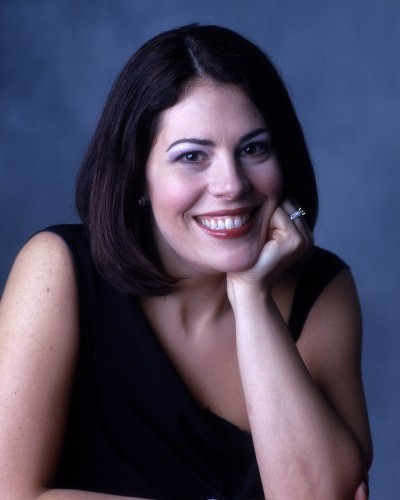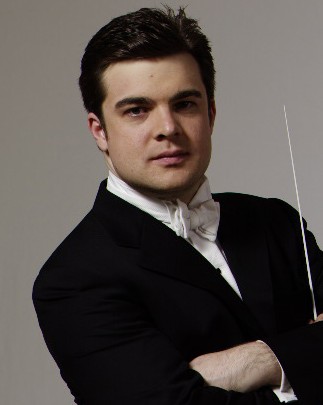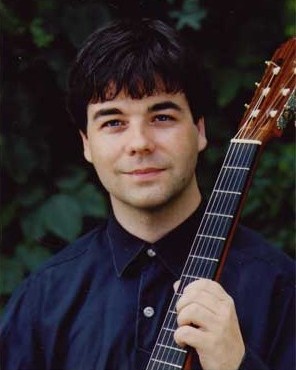On tonight's show:
Opera Colorado
Charley talks with soprano Sondra Radvanovsky, who sings the title role in Opera Colorado's production of Puccini's Tosca, which opens this Saturday.
Giacomo Puccini: Aria, "Vissi d'arte" from Act II of Tosca
Moscow Chamber Orchestra
Constantine Orbelian, conductor
Sondra Radvanovsky, soprano
Telarc pre-release
Colorado Music Festival
Music director Michael Christie and the Chamber Orchestra play Schubert's Tragic Symphony.
Franz Schubert: Symphony No. 4 in C minor, D. 417 (Tragic)
Colorado Music Festival Chamber Orchestra
Michael Christie, conductor
recorded 7/16/06
Lamont School of Music
Charley looks forward to Jonathan Leathwood and Heidi Brende Leathwood's recital at the Lamont School of Music Saturday.
Franz Schubert: Arpeggione Sonata in A minor, D. 821
I. Allegro moderato
Matthew Dane, viola
Jonathan Leathwood, guitar
KVOD Performance Studio: recorded 3/24/10
Produced by Martin Skavish
Front Range Chamber Players
Charley talks with the Front Range Chamber Players artistic director David Brussell about their season finale Sunday, and about his new book, Musical Oddities.
Giacomo Puccini (1858-1924): Aria, "Vissi d'arte" from Act II of Tosca
Victorien Sardou's drama La Tosca had already been rejected by Giuseppe Verdi when Alberto Franchetti acquired the exclusive rights to set it as an opera. Meanwhile Puccini saw Sarah Bernhardt in a production of the play and was determined to have it himself. After much intrigue, Franchetti was talked into abandoning his project, only to discover that Puccini was interested. He never forgave Puccini for his treachery. Giuseppe Giacosa and Luigi Illica fashioned a libretto and Puccini's Tosca was introduced in Rome on January 14, 1900.
In the second act, the title character, an opera singer, has just heard her lover Cavaradossi being tortured when the torturer, Baron Scarpia, tries to woo her. She who “lived for art” muses on her cruel fate.
Vissi d'arte, vissi d'amore,
non feci mai male ad anima viva!
Con man furtiva
quante miserie conobbi, aiutai.
Sempre con fé sincera,
la mia preghiera
ai santi tabernacoli salì.
Sempre con fé sincera,
diedi fiori agli altar.
Nell'ora del dolore
perché, perché Signore,
perché me ne rimuneri così?
Diedi gioielli
della Madonna al manto,
e diedi il canto agli astri,
al ciel, che ne ridean più belli.
Nell'ora del dolore
perché, perché, Signore,
perché me ne rimuneri così?
(I lived for art, I lived for love:
Never did I harm a living creature!
Whatever misfortunes I encountered
I sought with secret hand to succour.
Ever in pure faith,
my prayers rose
in the holy chapels.
Ever in pure faith,
I brought flowers to the altars.
In this hour of pain.
Why, why, oh Lord,
why dost Thou repay me thus?
Jewels I brought
for the Madonna's mantle,
and songs for the stars in heaven
that they shone forth with greater radiance.
In this hour distress
Why, why, oh Lord,
why dost Thou repay me thus?)
Franz Schubert (1797-1828): Symphony No. 4 in C minor, D.417 (Tragic)
I. Adagio molto; Allegro vivace
II. Andante
III. Menuetto: Allegro vivace
IV. Allegro
Schubert was nineteen years old when he finished his Fourth Symphony on April 27, 1816. It was probably introduced shortly thereafter by an amateur orchestra that met twice a week at Otto Hatwig's house in Vienna. According to Schubert's friend Leopold Sonnleithner, the orchestra's members included "merchants, tradesmen or minor officials." They had practised enough to handle most Mozart and Haydn symphonies, as well as the first two symphonies of Beethoven. One Josef Prohaska was the conductor; Schubert played viola.
The first public performance of the Fourth Symphony had to wait until the twenty-first anniversary of Schubert's death. August Ferdinand Riccius and the Euterpe Society played the work in Leipzig on November 19, 1849.
It was Schubert himself who gave the title Tragic to the Fourth. Why is unclear. Perhaps because it was his first symphony in a minor key. Or maybe because of his personal situation. He had just completed a gruelling three years as assistant to his schoolmaster father, and felt the need to escape. While working on the Fourth Symphony, he applied for the government position of Music Director at Laibach. Despite testimonials from his teacher, Antonio Salieri, and the chief inspector of schools, he was rejected in favor of a local drone named Franz Sokol.
Alfred Einstein says that the Schubert Fourth "betrays the disturbing influence of Beethoven." Antonin Dvorak marveled "that one so young should have had the power to give utterance to such deep pathos."
Joan Chissell writes: "In the first movement the intensity of the slow introduction, the challenge of the first subject and the melodic surge of the second leave no doubt of the force of Beethoven's inspiration. The finale, particularly the harmonically daring, thrusting development of the main theme's opening motif, has a voltage scarcely less strong. But in the C major homecomings of both these bigger flanking movements, Schubert's victory over fate is comparatively easily won. The benign lyricism of the slow movement, only briefly threatened by darker outbursts in minor tonality, is prophetic of the mature keyboard Schubert. The movement includes many subtleties of transition and scoring. The restless chromaticism of the Minuet, offset by a disarminly naive Trio, is no less remarkable for a teenager."
The Symphony is scored for 2 flutes, 2 oboes, 2 clarinets, 2 bassoons, 4 horns, 2 trumpets, timpani and strings.
